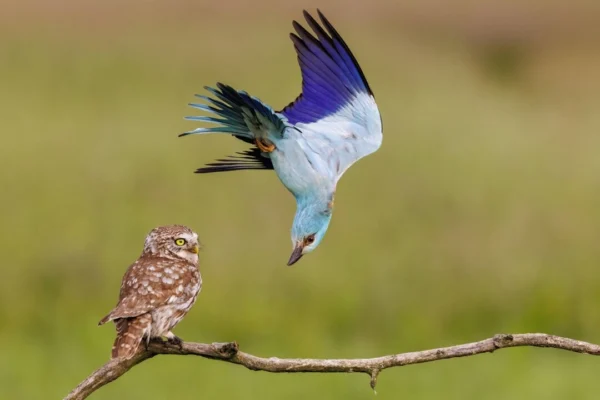Nature is beautiful, but within this beauty lies a harsh reality where survival often demands fierce hunting and sacrifices from prey. Predators hunt with precision while prey strive to escape, the cycle of life and death continuing relentlessly, with unwavering persistence.
Among the entries in the finalist list of the “Wildlife Photographer of the Year 2024” competition, many photos not only tell stories of harsh survival but also captivate attention with their striking beauty. The choice for the best photo of the year now rests in the hands of the public, who can vote for their favorite pieces on the website of the Natural History Museum in the UK. The voting has already begun and will close at 9 a.m. Eastern Time on January 29, 2025.
“The People’s Choice Award allows the public from all over the world to join the judging panel and vote for their favorite images, inspiring everyone to connect with the natural world,” said Dr. Douglas Gurr, the director of the Natural History Museum, in a press release. “As usual, the photos selected for the 60th-anniversary celebration of the competition this year are truly outstanding, and we can’t wait to see which one will be chosen as the public’s favorite!”
The “Wildlife Photographer of the Year” competition received nearly 60,000 entries from 117 countries/regions, and the judges have narrowed it down to 100 finalists. From these, 25 photos have been selected for public voting. The winning photo and four runners-up will be announced in February 2025 and showcased online.
In Chile’s Torres del Paine National Park, the symbol of hope lies in the American lions, reflecting successful conservation efforts that have fostered coexistence between this species and the local ‘gauchos.’ The rise of ecotourism has improved the gauchos’ perception of the American lions, as they now recognize the contributions of these large felines to the region through tourism revenue. By using sheepdogs to protect the sheep, the lions focus on their natural prey, reducing the chances of being targeted by the gauchos and further easing human-lion conflicts. These gradual changes in the past two or three decades indicate the potential for a more harmonious relationship between humans and American lions.
In Hungary’s Kiskunság National Park, a European roller is seen defending its breeding territory against a seemingly indifferent little owl attack. These two species are vastly different but share similar nesting and feeding habits, leading them to breed in close proximity to each other.
During the brief mating season, male European rollers attack other birds that mistakenly enter their breeding area. They prefer ambush attacks, flying full speed from behind towards their target.
In Botswana, a resilient honey badger, known for its ferocious nature, engages in a fierce conflict with a Cape porcupine. The honey badger initially attacks the porcupine’s legs but is repeatedly struck by its sharp quills. Despite temporarily retreating, the bloodied honey badger returns, resolves the porcupine under the bushes, and drags it into its underground den.
In St Leonards-on-Sea, UK, a Eurasian badger is captured seemingly admiring some badger-themed street art on a dimly lit street. Residents often leave food scraps on the pavement for foxes, but the photographer noticed a badger also coming to feed. To capture this photo, he set up a small hideout by the roadside. Under the dim streetlight, the badger walks unsteadily along the pavement, creating a vivid visual contrast with the graffiti.
In Vancouver, Canada, a barn owl is elegantly photographed flying out of a window of a hay shed. The photographer spent several nights observing the owl’s behaviors and then set up a system with motion-triggered flash and slow shutter speed to capture this scene. After 10 nights of observation and waiting, all factors finally aligned, resulting in a memorable and beautiful image of the owl in flight.
In Belgium, a white stoat blends completely into the snowy landscape, sitting upright scrutinizing its territory. The photographer was drawn to the winter snowfall, spending years trying to capture this elusive scene. He lay in the snow with a white camouflage net, finally realizing his dream as a curious white stoat emerges from a snow hole, briefly pausing before setting off for a hunt.
In Neko Harbour, Antarctica, under a spectacular blue-gray sky, a Weddell seal lies peacefully on an ice floe. To avoid disturbing the seal, the photographer used a telephoto lens to capture this moment from the ship. These seals have a large, thick layer of fat that suits the frozen climate of the Southern Ocean.
In Kgalagadi Transfrontier Park, South Africa, a giant ground gecko bravely confronts a southern pale chanting goshawk, known for hunting prey on foot. Despite its courageous efforts, the gecko did not survive the attack, leaving a lasting impression on the photographer with its bravery.
To view all the shortlisted photos and cast your vote for your favorite, visit the Wildlife Photographer of the Year website.

